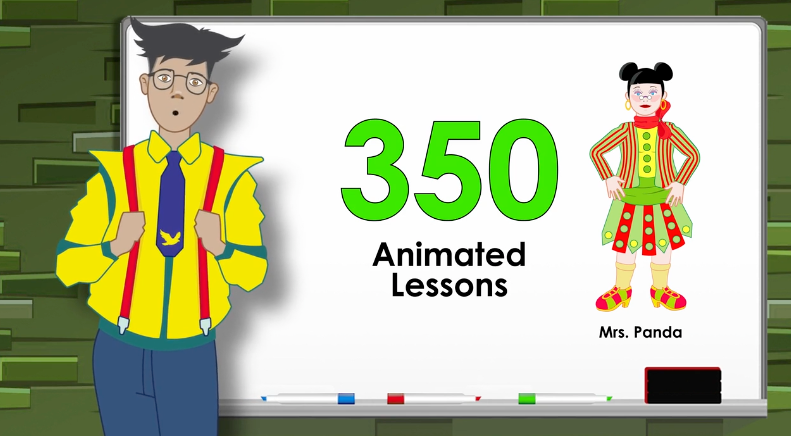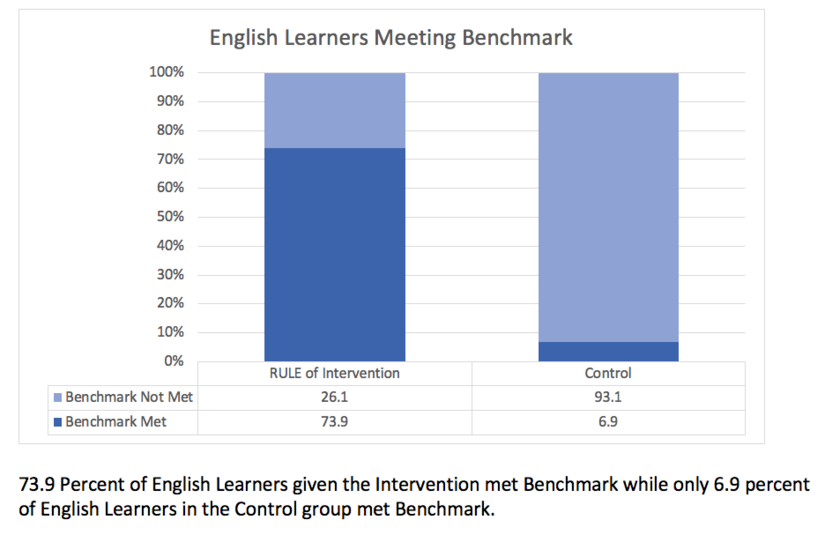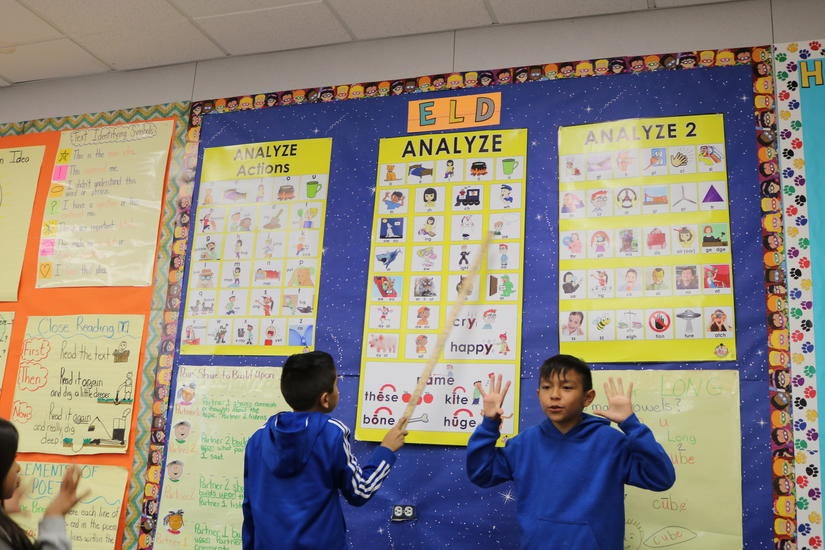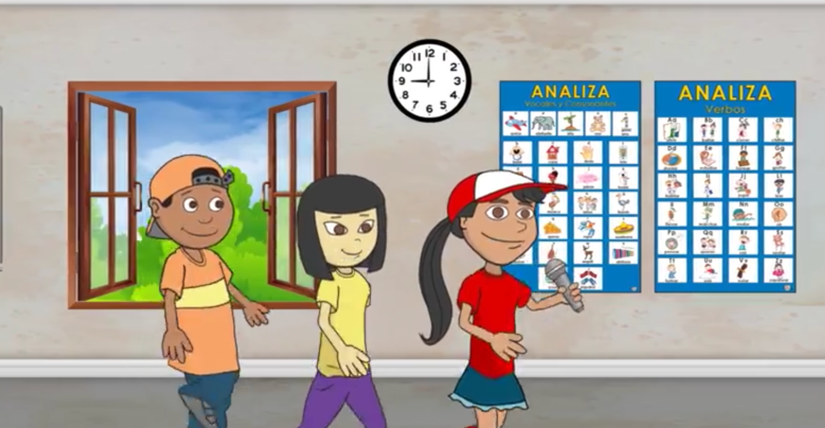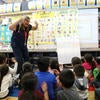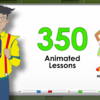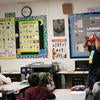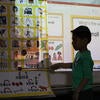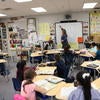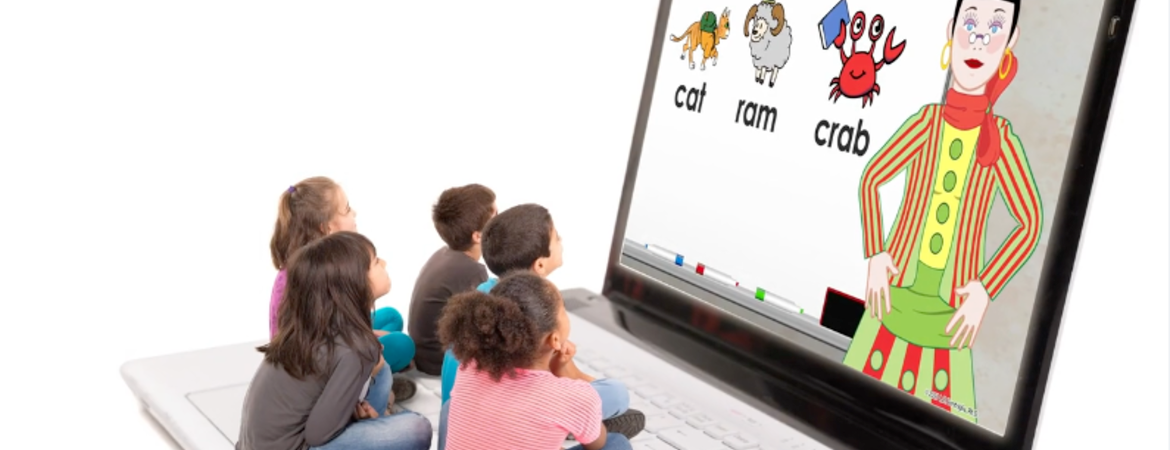
Mrs. Panda has a sweet voice. She encourages children to pronounce letters and vowels, and to sound out words. Then she instructs them to kiss their smart brains.
The voice behind the colorfully dressed animated character on their computer screens is that of UC Riverside education researcher Linda Ventriglia-Navarrette. Mrs. Panda, an animated pedagogical emissary, was Navarrette’s creation.
During the COVID-19 pandemic, Navarrette created the character as she transferred all her physical teaching materials into a digital learning platform known as “ABC Rule of 3.” The program gives English learners and other early childhood learners a unique way to learn language and literacy skills. Navarrette adapted her existing, in-person Rule of 3 curriculum by creating lesson scripts, imaginative PowerPoints to enrich children’s vocabulary, animated phonics charts, and catchy songs.
This research-based teaching design is meant to accelerate students’ language and literacy skills through engaging lessons. The program is part of Navarrette’s Project Moving Forward, designed to help English-language learners and students with limited English proficiency. Project Moving Forward is backed by a U.S. Department of Education grant.
“This pandemic hit, and parents and teachers started writing to us, asking to put the Rule of 3 program online,” said Navarrette, who launched Project Moving Forward in 2012. She is a researcher with UCR’s Graduate School of Education. Before the idea had been to just teach using the Rule of 3 in classrooms, but the online ABC Rule of 3 program is now allowing access to both teachers and parents across the United States.
“Parents can provide additional instruction at home,” Navarrette said. “Teachers can use the structured program to accelerate learning and differentiate instruction. Lessons can be watched multiple times until each standards-based skill is acquired.”
In the new website, ABCRULEof3.com, users can find lessons for kindergarten students. The goal is to keep uploading content for other elementary grade levels, Navarrette said.
The Rule of 3 program has been used in dozens of school districts across the United States, including the Inland Empire.
Rule of 3, or RAP, stands for the Rehearsal, Analysis and Production of words. It is a fast-paced, interactive program that puts the onus for learning on the child. Since its implementation, Project Moving Forward has received two multi-million dollar grants and a prestigious Golden Bell Award from the California School Boards Association. In 2018 its efficacy caught the attention of then assistant deputy secretary of the U.S. Department of Education and director of the Office of English Language Acquisition (OELA), José Viana. He visited the Inland Empire to observe teachers teaching the program.
For nine years now, participants in the Rule of 3 program have shown significant gains standardized tests, including the CELDT, ELPAC, DIBELS and Gates-MacGinitie reading tests.
In 2019, a yearlong randomized study with 339 students in 16 kindergarten classrooms from nine different schools demonstrated the Rule of 3’s effectiveness. Navarrette said 73.9% of English learners given the intervention met national benchmarks, compared to only 6.9% in the control group.
“My goal has always been to close the achievement gap. Students of color in certain districts come in with huge learning curves and this program helps them make incredible progress,” Navarrette said.
Transitional kindergarten teacher Shannon Rodriguez said her students’ reading, writing, listening, and speaking skills significantly improved throughout this past school year with the 30-minute online ABC Rule of 3 program, and they loved the interaction with Mrs. Panda.
“Not only have they learned their letters and sounds, but their English has improved as well,” said Rodriguez, a teacher at Las Palmitas Elementary School in Thermal, a desert community in the Coachella Valley Unified School District. “I have a lot of non-English speakers in ‘TK’ and by doing the songs with Mrs. Panda and by having the students grow and grow their sentences every day, their English skills have improved immensely.”
Mrs. Panda helped her virtual instruction, but before COVID-19, she was using the Rule of 3 in her classroom. In her 24-year career, Rodriguez said this is the program that best allows students to read and analyze questions.
Before the pandemic hit, Las Palmitas Elementary kindergarten teacher Gloria Perez’s room was surrounded by large yellow sticky notes, filled with letter sounds, and sound-spelling patterns. The Rule of 3 curriculum class moved quickly, with interactive sounds, jingles, and lots of body movements. Navarrette designed it to specifically keep the little minds attentive.
“I have been teaching the program for two years and since I learned it, I liked it,” said Perez, who has been teaching for 28 years. “I like the use of large images because without them words are abstract; analyzing the words allows students to see all the parts of the word.”
Teachers and parents everywhere can now find the instructional material online, including animated videos with characters that speak English, Spanish, and Mandarin.
“Online access can help with education inequity, and it means allowing our kids to compete out there in academics and in the workforce later in life,” Navarrette said.
